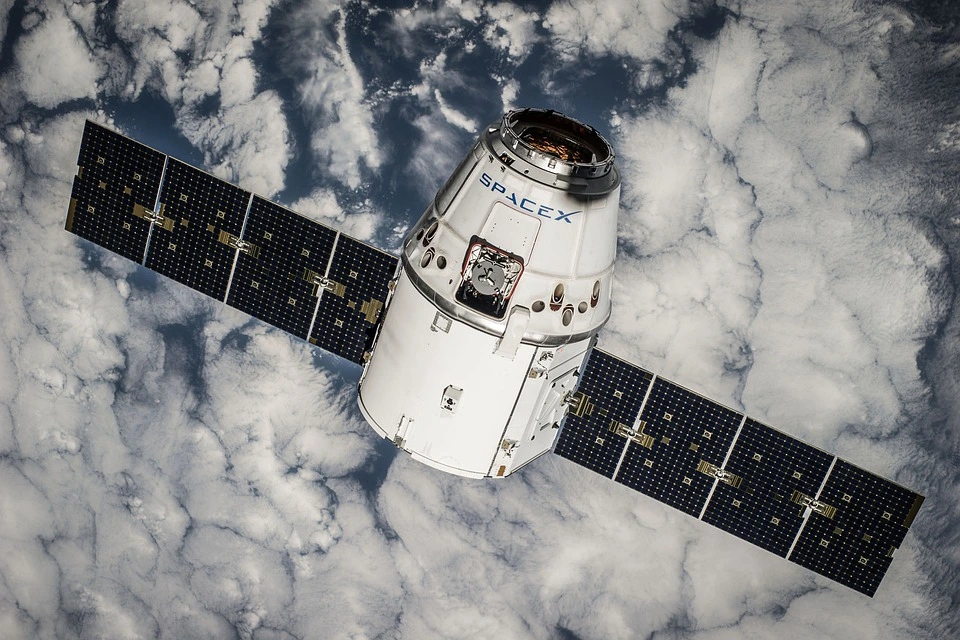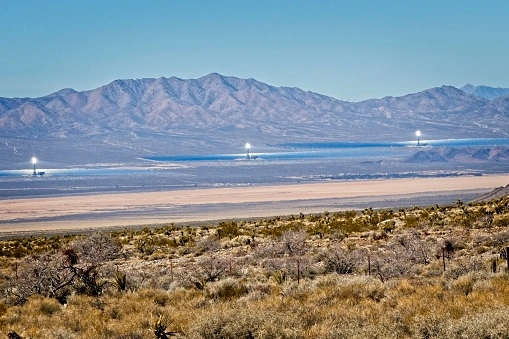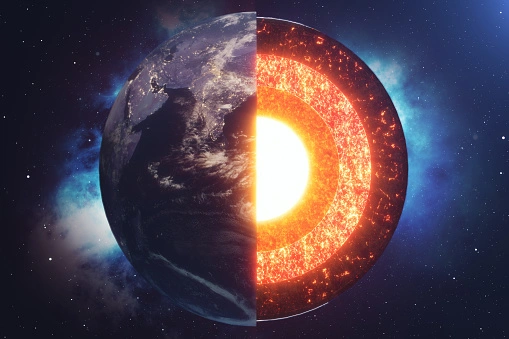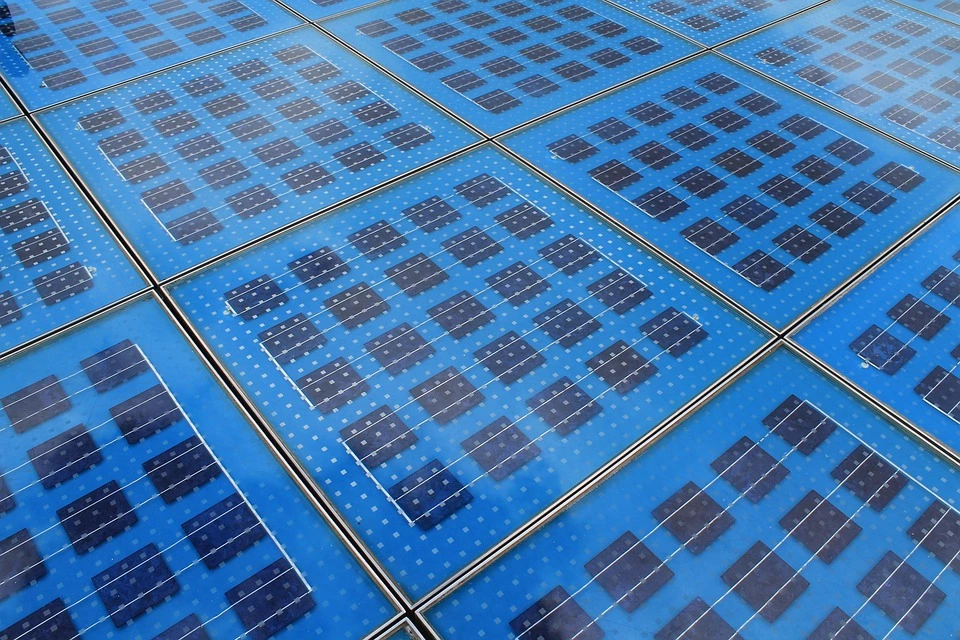“Electricity is but yet a new agent for the arts and manufactures, and, doubtless, generations unborn will regard with interest this century, in which it has been first applied to the wants of mankind.”
Alfred Smee
Our generation can marvel at the last century’s transformation through the production of electricity with fossil fuels.
Future generations will look back at this century’s adoption of alternative energy sources.
The future is predicted to be one in which we derive energy from sources that are completely renewable. That will lead to a cleaner, less wasteful human reality.
Let’s explore 5 of the best renewable energy sources for the future!
Best Renewable Energy Sources for the Future

1. Space-based Solar Farms
Solar farms are becoming very widespread on earth. The problem is they take up a ton of real estate to generate enough solar power for commercial use.
Scientists and engineers are exploring the idea of moving these solar farms into space. Here’s the basic idea of solar farming in space.
- Can deliver solar power electricity anywhere on earth
- Circumvents current disadvantages of solar energy like cloudy days, non-equatorial latitudes, and sun-tracking
- This form of solar power may be commercially viable within the next 30 years
This technology was first proposed by an aerospace engineer named Peter Glaser in 1968, “the father of the solar-powered satellite.”
Since then, the idea of creating space-based solar energy farms has been a topic of interest in the scientific community, but it hasn’t come to fruition.
Benefits of Solar Energy Farms
This model of harnessing solar energy is based on the fact that sunlight in space is uninterrupted. Solar energy pros and cons are mostly weather-based.
Solar panels can only produce energy during daylight hours in good weather.
Space-based solar farms overcome these obstacles because they can be placed where they’ll track the sunlight day and “night.”
Additionally, sunlight found outside the earth’s atmosphere is 30% more intense than the sunlight we receive on Earth’s surface.
How a Space-Based Solar Farm Would Work

In order to create a functioning solar farm, companies would send inflatable modules into space to form a bell-like structure that contains mirrors to direct and concentrate sunlight onto solar panels.
This is how solar concentrator systems, like the one pictured above, generate solar power electricity on earth. These renewable energy technologies would also work in space.
The solar panels would generate energy to be sent anywhere on earth, but that’s the rub. How can the solar energy produced be delivered to the earth?
Challenges Facing Space-based Solar Farms
The biggest challenge is getting the produced energy back down to Earth. The energy these solar farms produce can be sent down in the form of microwaves or with a powerful laser.
The issue with this is that the cost of the entire process currently outweighs the benefit of the increased solar power production it provides.
The transferring of energy also has the potential to be harmful through weaponization or mishap. Despite these concerns, the possibilities for this technology are great.
It will be able to deliver solar energy to remote locations anywhere on earth, which is of tremendous value. This global energy system could be within our grasp.
With the rise of private space companies, some have predicted that this technology could be commercially viable within 30 years.
China currently has plans to construct a space-based solar farm. They claim to have successfully tested and proven the technology. They aim to have a functioning space-based solar energy farm by 2028.
2. Human Energy

Of all the sustainable energy sources in the universe, the most reliable energy system might be right under our noses!
Humans are full of energy, and we recharge our energy banks every meal and every night! We expend energy moving from place to place and generating body heat that dissipates into the atmosphere.
The dream of many scientists is to effectively harness the excess energy that humans produce and use it to power our lives.
Here are the basics of harnessing human energy.
- Could begin to reverse the negatives of high-density urban living and urban sprawl by turning kinetic energy produced into electricity.
- Can create a circular energy production model where we use energy to live and also produce the energy we need for life.
- Harnesses energy we produce that currently goes to waste as movement and dissipated heat.
We’re all aware of our energy needs, both internal and external, but amazing technology is being developed to harness the energy waste from our bodies and use it for electricity generation.
How Human Energy Electricity Works
Humans gather calories through the consumption of food, which our bodies then convert into usable energy.
In many ways, our bodies are similar to a machine, just like any other that uses energy to perform work. We use this energy for vital functions, such as keeping our hearts beating or powering our brains.
However, much of the energy our bodies produce is also used in the forms of heat and kinetic energy through movement. Much of this goes to waste and remains unclaimed by humans.
This energy can be harnessed by technology that we wouldn’t even know was there.
We’ll explain this a little bit later, but the basic idea is that as we go about our lives we would also be generating the power we need for lights, appliances, etc.
Converting Human Energy into Mechanical Energy

In fact, for most of human history, human power has been the most important form of mechanical energy available to us.
Human or animal energy has created and utilized all our structures, homes, farmlands, and tools.
It’s easy to think of ways that human energy is converted into mechanical energy.
- Swing a hammer or golf club
- Push a shovel into the ground
- Lift a bag of groceries
- Push a swing or a wheelbarrow
- Pull a rake
- Tap the keys on a keyboard
These are a few examples of ways that we convert the energy from the food we eat and the sleep we get into mechanical energy for living.
Before the invention of the steam engine and then the internal combustion engine, human power, and horsepower made the world go ’round.
At rest, the average person’s body produces around 100 watts of power. Production is much higher when performing vigorous activities.
- A human that’s cycling can comfortably generate 400 watts of power per hour.
- Top-performing cyclists can generate up to 1800 watts during short bursts of exertion.
- A sprinter can generate 2,000 watts in short bursts.
If you consider the average amount of heat and kinetic energy produced by humans in a single city, you can see why scientists are eager to develop this promising renewable energy source.
Challenges Facing Human Energy Harvesting
So, with all this energy going to waste, we must ask ourselves the question: how can we harness this energy? There are two big issues with harnessing human energy.
The first is that current energy harvesting strategies are not very efficient, but this will change. Scientists are developing technologies that harness this energy at enhanced efficiencies and at a lower cost.
One problem holding back human power as a viable renewable energy source is that of modern battery technology. This problem has been recently solved – on a small scale.
Researchers at Colorado State University and elsewhere are racing to find wearable batteries that can be charged by human heat and movement.
New batteries are in development that can be worn on or next to your skin and produce about 1V per cm of skin contact. That’s enough to keep your Apple Watch or Fitbit powered up!
Scientists envision cities where entire buildings are powered by the kinetic energy produced by human daily activities.
Human-Powered Experiments and Successes
In London’s West End, people can walk along a small section of Bird Street that’s paved with kinetic tiles. The tiles collect energy from the footsteps people are naturally taking as they walk down the street.
The energy collected is used to power nearby street lamps and small electronics. It’s a great success on a small scale.
Imagine if there were long kinetic sidewalks and even kinetic roads where commuting powers our cities and charges our EVs in a circle of green energy use and production.
Pavegen is a leading company in human power production. Their kinetic tiles are being installed around the world to harness the power of human footsteps.
Rutgers University and many other institutions are rushing to create a viable and affordable way to generate electricity from roads and bridges.
This technology is certainly on the horizon and will redeem those hours we spend commuting to work by using them to generate clean, renewable energy.
Imagine a world where we commute to work and power our cities without greenhouse gas emissions. It could be a reality.
3. Core Geothermal Energy

We already know about geothermal energy pros and cons for electricity generation. It’s clean, renewable energy that can cause geological disturbances.
The problem is that geothermal energy is currently limited to areas that already have sources of hot water close to the surface of the earth – mainly areas around the Ring of Fire.
Core geothermal energy development aims to bring the energy contained in the earth’s core to the surface using extremely deep drilling techniques.
Here are the basics about core geothermal energy.
- It is accessible anywhere on earth because the energy is derived from the core of the earth.
- Provides a limitless supply of pollution-free energy.
- Could produce energy equivalent to that of nuclear power plants – but with much less risk.
The molten core of the earth has enough energy to provide for the needs of humanity in a limitless supply.
If we could drill down to the core, we would be able to access incredible amounts of clean, pollution-free energy that people anywhere on the earth could tap into.
The Source of Core Geothermal Energy
The earth’s core is unimaginably hot – about 9,392 degrees Fahrenheit, which is nearly as hot as the sun’s surface.
This heat is a combination of the remaining heat from the earth’s formation, heat from the decay of radioactive materials, and the heat generated from friction when dense core material sinks to earth’s center.
Electricity would be generated by pumping water into wells drilled near the earth’s core. The water would become superheated and rise back up as steam.
It would then be used as dry steam in a geothermal power plant, harnessing all the advantages of geothermal energy.
So, with this incredible amount of energy lying beneath our feet, why haven’t we been tapping more of it?
Challenges Facing Core Geothermal Energy
In order to access this energy, we would need to drill down about 12 miles into the earth to access deep geothermal heat. The heat found at these depths is comparable to the energy produced by a nuclear reactor.
However, this incredible depth complicates the drilling process because of extreme temperatures.
Another crippling issue is getting this energy back up to the surface with the materials available to us. Copper melts at these temperatures, along with most other viable materials.
Scientists may have found the answer through a recent development in graphite technology. That is the discovery of graphene.
Graphene is an amazing material.
- Graphene is 200 times stronger than steel
- An excellent thermal and electrical conductor
- 100 times more conductive than copper – necessary for deep drilling
- Melts at a temperature of around 7,592 degrees Fahrenheit – perfect for approaching the core
Using graphene rods that drop down to regions close to the earth’s core could yield limitless energy that has zero greenhouse gas emissions. This would transform the sustainable energy industry.
4. Quantum Dot Solar Cells

We all know about solar energy pros and cons, at least to some extent. Solar panels generate renewable electricity, but they’re pretty inefficient and don’t work in the dark.
Well, quantum dot solar cells might be the answer we’re all looking for to make solar energy a reliable technology for the future.
Here’s the basics of quantum dot solar cells.
- They’re really small so they’re far more versatile than regular PV panels
- They can be incorporated into windows and possibly siding and devices
- Will revolutionize current solar technology – especially the size requirements
- Converts considerably more solar energy – up to 45% efficiency
Not only will the future contain new ways of harnessing renewable energy resources, but it will also contain greatly advanced versions of the technologies that we currently use today.
What are Quantum Dot Solar Cells?
Quantum dots are nanocrystals constructed with semi-conductive materials. A thin coating of these nanocrystals can be applied to a solar cell.
The quantum dots absorb sunlight to excite the nanocrystal particles.
The band gap of these quantum dots corresponds to the frequency of the sunlight they are receiving, allowing them to convert more than 45% of the sunlight into energy.
This is far, far more than any solar technology available to us today, with the average solar cell in use today reaching around a 15% efficiency rating.
Quantum dot solar cells are much lighter, more versatile, and more durable than our current solar cells. This means that the technology has the potential to transform numerous material surfaces.
Applications for Quantum Dot Solar Cells
A promising application for this technology is solar windows. These windows would be able to generate renewable electricity while providing insulation and shading at the same time.
Modern windows are incredibly efficient because the front layer absorbs blue light while the second layer absorbs the rest of the spectrum.
Quantum dots in the second layer of a solar window re-emit photons at a longer wavelength, allowing the solar cells integrated into the window frame to convert the energy into electricity.
This technology would be relatively cheap, a natural alternative to regular windows, and could significantly lower the price of solar technology.
This would pay off in the long run because solar technology could be incorporated in many more places and homeowners may not have the same reservations about them as they do about big PV panels.
The increase in solar-powered electricity and the decrease in burning fossil fuels for electricity would benefit all of us.
5. Nuclear Fusion

People sometimes view nuclear technology as a “dirty” way of producing energy since the current method of nuclear fission produces significant amounts of radioactive waste.
However, people should make a clear distinction between nuclear fission and nuclear fusion.
Nuclear fission splits a large atom into two smaller ones, releasing energy and neutrons which causes further atoms to be split. This results in a possible chain reaction.
Nuclear fusion, on the other hand, occurs when two atoms slam together to create a heavier atom that releases energy.
Fusion uses the same materials to produce exponentially more energy than fission.
Fusion does not produce long-lived radioactive waste products like fission does, making it a clean energy source.
Here are the basics of nuclear fusion energy.
- Has the most potential to change the way we view energy production
- Nuclear fusion energy is 100% clean, as compared to current nuclear fission energy
- Small production facilities would be portable
- Nuclear fusion could make renewable electricity accessible around the globe
Fusion can also be carried out with materials that are largely inexhaustible and widely available.
In fact, solar energy is a type of fusion energy because the sun produces energy through a fusion process within its core. We harvest the energy from that fusion process with PV panels.
Nuclear fusion produces approximately four million times more energy than coal. We would need only a fraction of the number of power plants on earth today to supply the human population’s energy needs.
The amount of sustainable energy produced by fusion is so large that one could consider it virtually limitless.
Challenges Facing Nuclear Fusion
Even though fusion is an incredibly promising sustainable energy source, it is not without its flaws.
The process is incredibly difficult to achieve. That is due to the fact the reaction can only take place under extreme conditions.
Fusion requires extreme amounts of heat (100 million kelvin) and massive amounts of pressure.
These requirements mean that achieving nuclear fusion on earth currently requires more energy than it produces.
The Joint European Torus, or JET, is a nuclear fusion reactor that is giving scientists a sunny outlook on the future of nuclear energy.
In 2022 they successfully produced 59 megajoules of electricity using nuclear fusion at the JET reactor. That isn’t a lot – enough to run your washer and dryer – but it’s an exciting development.
These successful experiments are proving the concept and taking the world one step closer to truly unlimited, completely clean electricity that will never cause global warming.
The International Thermonuclear Experimental Reactor (ITER) in France is a collaboration of 35 countries. It is leading the way in nuclear fusion development for a clean energy future.
Some predict that the ITER could provide nuclear fusion energy to the grid as early as 2045.
Private companies have also undertaken the pursuit to harness the full potential of nuclear fusion. Those include Lockheed Martin and Tokamak, a company in the UK.
- Lockheed Martin claims that they could produce a fusion reactor small enough to fit on a truck trailer that would power 100,000 homes.
- Tokamak could be producing nuclear fusion energy as soon as 2030.
These are such exciting developments for all of us because they open up the possibility of enjoying life as we know it, with lights, electronics, and central air without damaging the earth.
Our Next Steps
Human technology has been advancing at exponential rates, and the energy sector is no different.
Scientists almost unanimously agree that we will transition into a world that solely relies on renewable energy sources within the lifetime of someone born in the last 20 years.
This transition is an absolute necessity given the threat that climate change poses to us as a species.
Although people may not always view the future with optimism, when considering the future of energy production, it is definitely a brighter, cleaner forecast.
What are your thoughts on renewable energy resources of the future? Have you heard about any new developments we don’t know about yet? Let us know in the comments below!
